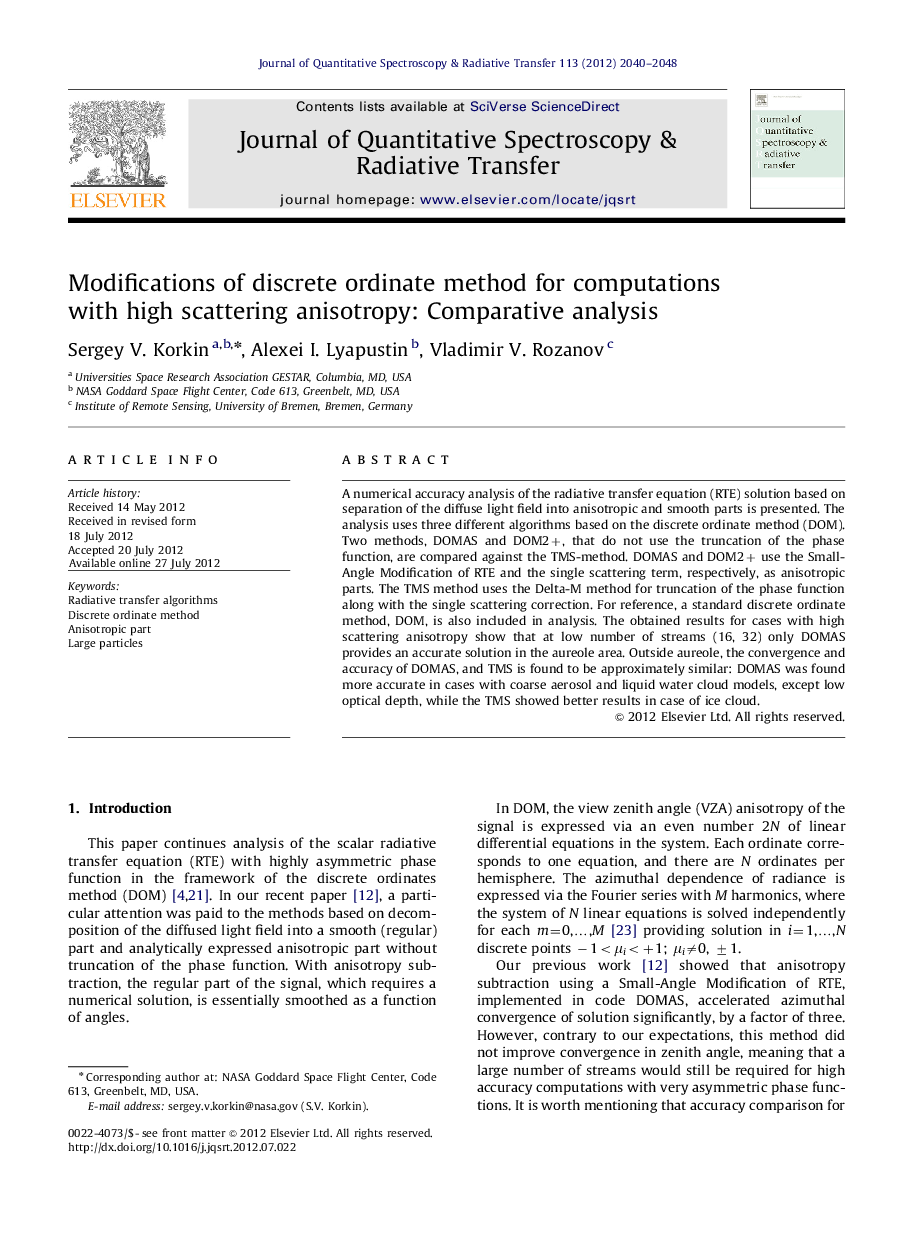| Article ID | Journal | Published Year | Pages | File Type |
|---|---|---|---|---|
| 5429007 | Journal of Quantitative Spectroscopy and Radiative Transfer | 2012 | 9 Pages |
A numerical accuracy analysis of the radiative transfer equation (RTE) solution based on separation of the diffuse light field into anisotropic and smooth parts is presented. The analysis uses three different algorithms based on the discrete ordinate method (DOM). Two methods, DOMAS and DOM2+, that do not use the truncation of the phase function, are compared against the TMS-method. DOMAS and DOM2+ use the Small-Angle Modification of RTE and the single scattering term, respectively, as anisotropic parts. The TMS method uses the Delta-M method for truncation of the phase function along with the single scattering correction. For reference, a standard discrete ordinate method, DOM, is also included in analysis. The obtained results for cases with high scattering anisotropy show that at low number of streams (16, 32) only DOMAS provides an accurate solution in the aureole area. Outside aureole, the convergence and accuracy of DOMAS, and TMS is found to be approximately similar: DOMAS was found more accurate in cases with coarse aerosol and liquid water cloud models, except low optical depth, while the TMS showed better results in case of ice cloud.
⺠DOMAS is accurate in the aureole area even for a low number of streams. ⺠Beyond aureole, the accuracy of DOMAS and TMS is similar. ⺠DOM2+ has a good accuracy for a thin cloud/aerosol layer at a low number of streams. ⺠All codes have comparable memory requirements, and TMS requires least computer time.
